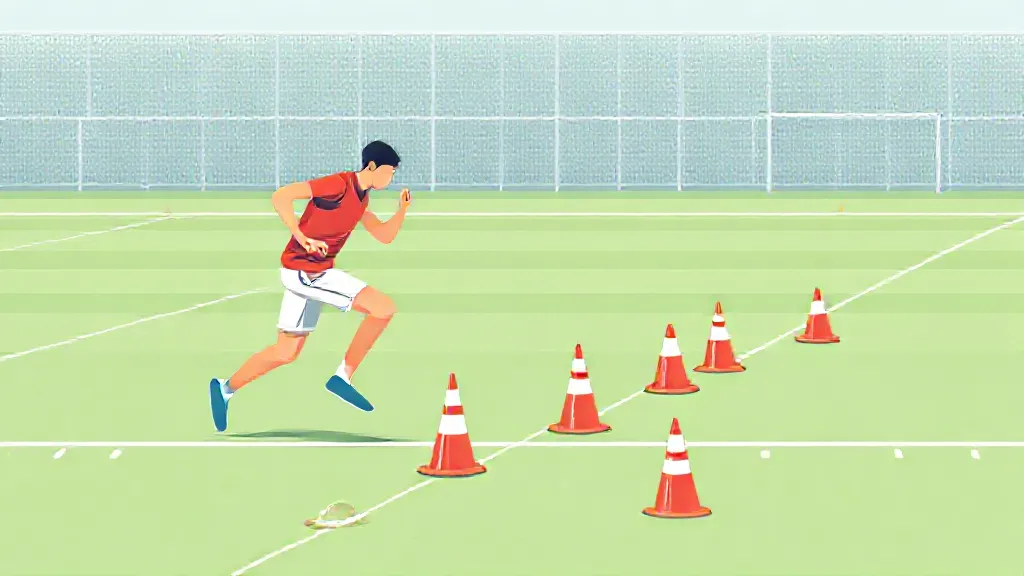Agility training is an essential component for athletes participating in fast-paced games such as soccer, basketball, and rugby. These sports require players to make quick decisions, change directions rapidly, and maintain balance while under pressure. Agility refers to the ability to move quickly and easily, which is crucial in avoiding opponents and making plays.
The significance of agility training lies not only in enhancing performance but also in reducing the risk of injuries, making it a vital aspect of sports training.
The Science Behind Agility Training
Agility training involves a variety of exercises designed to improve an athlete's speed, coordination, and balance. These exercises often include ladder drills, cone drills, and plyometric movements.
The underlying principle is to develop the neuromuscular system, which plays a crucial role in how athletes react to stimuli. When athletes engage in agility drills, they train their bodies to respond quickly and efficiently to the demands of the game. Research has shown that improved agility can lead to better overall performance in high-speed sports, allowing athletes to outmaneuver their opponents effectively.
Injury Prevention Through Agility
One of the lesser-known benefits of agility training is its role in injury prevention. Fast-paced games often involve sudden stops and starts, which can lead to strains and sprains if an athlete is not adequately prepared. By incorporating agility training into their routines, athletes can strengthen the muscles and joints involved in these movements, thereby reducing the likelihood of injuries.
Studies indicate that players who engage in regular agility training experience fewer injuries compared to those who do not prioritize this aspect of their training.
Agility Training and Game Strategy
In addition to physical benefits, agility training can enhance an athlete's strategic understanding of the game. Athletes who are more agile can better anticipate their opponents' movements, allowing them to make quicker decisions on the field.
This ability to read the game can be the difference between winning and losing, as it enables players to position themselves advantageously and execute plays more effectively. Coaches often emphasize the importance of agility in developing game intelligence, which is crucial in competitive sports.
The Role of Agility in Different Sports
Different sports require varying levels of agility, and training programs should be tailored to meet these specific demands.
For instance, soccer players benefit from lateral movements and quick footwork, while basketball players need vertical agility for jumping and rebounding. Rugby players, on the other hand, require a combination of speed and strength to tackle opponents effectively. Understanding these nuances allows coaches and athletes to design agility training programs that align with the specific requirements of their sport.
Implementing Agility Training in Practice
To effectively incorporate agility training into practice, athletes should focus on drills that mimic the movements they will encounter during competition. This can include shuttle runs, zig-zag sprints, and reaction drills that require quick changes in direction. It is essential to gradually increase the intensity and complexity of these drills to ensure continuous improvement.
Additionally, integrating agility training with other aspects of fitness, such as strength and endurance training, can lead to more comprehensive athletic development.
Measuring Progress in Agility Training
Tracking progress in agility training can be challenging, but it is crucial for athletes to understand their development. Coaches can utilize various metrics, such as time trials for specific agility drills or performance in game scenarios, to assess improvements.
Regular testing allows athletes to see their advancements, which can be motivating and inform future training adjustments. Moreover, video analysis can provide insights into an athlete's movement patterns, helping identify areas for further improvement.
The Future of Agility Training
As sports science continues to evolve, so too will the methods and techniques used in agility training.
Advances in technology, such as wearable devices and motion capture systems, are beginning to play a role in how athletes train for agility. These tools can provide real-time feedback, allowing for more personalized training approaches. Additionally, as research into biomechanics and neuromuscular responses expands, agility training programs will likely become even more sophisticated, further enhancing athletic performance.
Conclusion: The Indispensable Role of Agility Training
In conclusion, agility training is crucial for athletes involved in fast-paced games. It not only enhances performance by improving speed, coordination, and decision-making but also plays a significant role in preventing injuries. As the landscape of competitive sports continues to evolve, the importance of agility training will only grow, making it an indispensable element of any athlete's training regimen.
Coaches and athletes must prioritize agility to ensure they are prepared for the demands of their sport, ultimately leading to greater success on the field.
